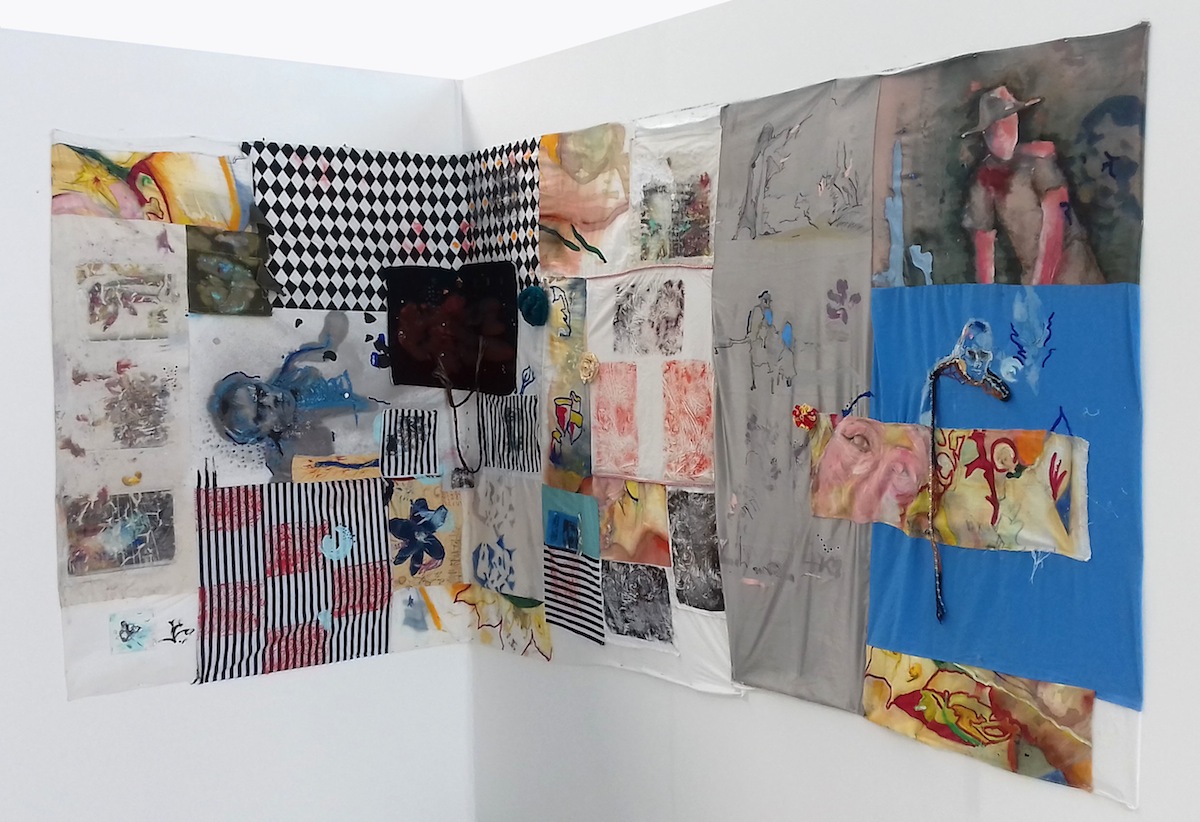Des Edwards: Shannon O’Kane
My first impression of Shannon O’Kane’s exhibition was of fragmentation, of a heterogeneous collection of unrelated items. But it’s more akin to a collection of familiar items harvested from a home long lived in, faded talismans from the life of a family, redolent of the comfort that comes from long acquaintance. So, the collection was linked, not by theme or style, but by a texture of personal history and memory.
The centrepiece of the show is a patchwork blanket stitched together mainly from fragments of paintings and printed patterns. It seems natural, given the artist’s reference in her statement to the religious aspects of the blanket, to pick out the prominent square black patch, which, with its placement at the meeting of two walls, reflects the position of Malevich’s Black Square in the Five Ten exhibition of 1915. where the painting was hung high in a corner, the traditional position for religious icons in Russian Orthodox homes. A spiritual borderland formed from the intersection of the planes of walls and ceiling.
O’Kane’s work exists in artistic borderlands. It stands as art that refers to traditional crafts. It also steps tentatively from two dimensions towards three: the blanket is hung around an inside corner, moving it from collage towards soft sculpture or installation. The semantic of her work is somewhere between representation and embodiment. These tensions are made quite visible in the small piece consisting of a scrap of embroidered felt and a simple painted wooden frame. This assemblage uses what could be considered craft objects, but it absolutely is not a framed embroidery; the soft felt and the hard wood of the frame are hung on equal terms, on two nails driven into the wall. It is a wall piece, but it calls attention to its distinct parts as objects; and in it we can detect connotations embodied in how the components are physically associated: we can read hints of a relationship, intimations of protection and precarious independence.
Although O’Kane’s work can look like craftwork, this is not to say that it is inconsequent or decorative. Just as the best craft-art resonates with the essence of community, this work runs deep with personal and family significance.

